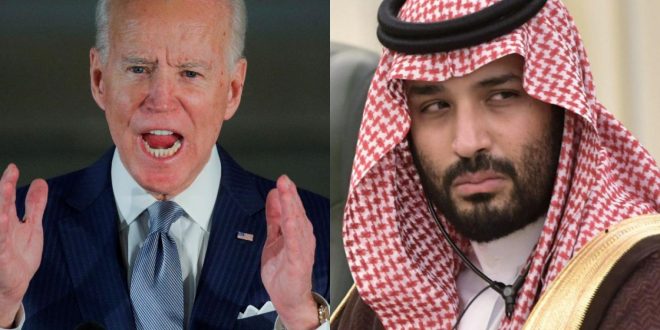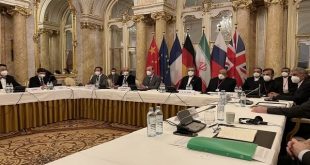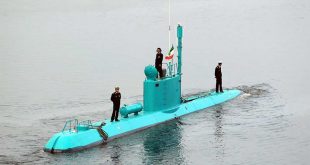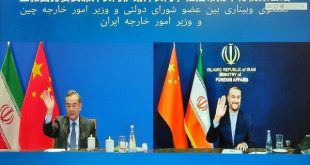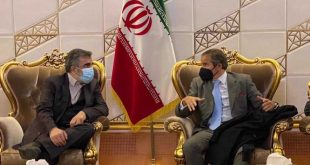Alwaght- Amid the advances being made by the Yemeni army and popular committees in the oil-rich Ma’rib province in northern Yemen and failure of the diplomatic efforts for a ceasefire, in recent days a US-led political and propagandistic campaign was launched that aimed to blame Sana’a for the impasse the Muscat peace process is running into. In separate statements, the Group of Seven (G7) and the US criticized the push by Ansarullah Movement of Yemen to liberate Ma’rib as the last stronghold in the north of the fugitive government of Abdrabbuh Mansour Hadi, saying that Sana’a is to blame for collapse of the ceasefire attempts.
The State Department issued a statement on the results of visit to Saudi Arabia of Tim Lenderking, the American special envoy to Yemen, claiming that there was a fair proposal for immediate end of the Yemeni plights but Ansarullah have lost a big chance to accept it and commit to peace. The statement lauded the stances of the resigned and fugitive Hadi and called a “cause of humanitarian crisis” the opposite side’s operation to liberate Ma’rib.
Responding to the statement, Ansarullah officials, rejected Western claims of responsibility for the failure of the ceasefire and the continuing humanitarian crisis in Yemen and set out their conditions for participating in any future peace plan. In a tweet, the member of the Ansarullah political office Mohammad al-Bukhaiti said: “That the G7 countries condemn the Yemeni attacks on the Saudis and the campaign for liberation of Ma’rib from occupation and at the same time ignore their blockade and aggression is expressive of the international hypocrisy and double-standards. For this, we continue our attacks deep into Saudi Arabia and liberation of our country.”
“We are ready to stop all military operations in exchange for an end to the aggression and siege and withdrawal of foreign forces from Yemen,” he continued.
Mohammad Ali al-Houthi, an Ansarullah member and chief peace negotiator, in a Twitter message held that the American proposals about the peace in Yemen are void of realistic and practical plans. He described the American peace plan as “sowing of illusion and reaping failure”, adding that the results are already clear for all.
Saudi deceptive plan from the mouth of the US, UN
There are two important points in the fall of recent diplomatic efforts to establish a ceasefire in Yemen, which make it clear that Sanaa’s rejection of the negotiating offer, contrary to the claims of the US and their Western allies, is not for the continuation of crisis and war, but is completely in line with ending the crisis.
First, the ceasefire plan that Washington blames Ansarullah for their rejection were not based on the battleground realities and were in fact a repeat of unrealistic and tactical views of Riyadh to stop Ansarullah progress in Ma’rib and buy time for rebuilding its consumed military power in Yemen.
Change in the equations of war have been going on for a long time, and with the tremendous military advances that the Yemenis have made in the field of missiles and drones, relying on domestic power, now every part of Saudi Arabia is within fire range of the Yemeni missiles. Along with progress in Ma’rib, Ansarullah is using this pressure card against the Saudis. The attacks on Saudi military, economic, and strategic centers, especially Aramco’s sensitive oil facilities in the past two years, and Riyadh’s complete inability to counter these attacks have taken away the Saudi power to continue the war. Latest strikes on Aramco oil processing facilities forced the Saudis to start their diplomatic movements to prevent further retaliatory attacks.
Riyadh first announced a peace plan that included concessions such as lifting the siege of al-Hudaidah port and reopening Sana’a airport. After that, even Saudi Crown Prince Mohammed bin Salman took a softer tone towards Tehran as an ally of Ansarullah at the regional level, showing that he was in a very dangerous situation in Yemen. But Ansarullah played too smart to fall in the Saudi trap, and pressed ahead with struggles to recapture of Ma’rib and expulsion of Mansour Hadi and Saudi mercenaries from northern Yemen, amid argument that the Western and Saudi peace plan does not meet the Yemeni demands, nor does it comply with the battleground realities.
The second issue is the smart and logical vision of Ansarullah that favors a real and permanent end to the war rather than negotiating a limited and tactical halt. The movement insists that its agreement to stop advances in Ma’rib should be responded by the opposite side fully lifting the blockade and stopping its attacks. Riyadh as the aggressor and the cause of ongoing critical conditions in Yemen in any peace plan should pave the way for end of the huge humanitarian crisis. It also should prepare to negotiate multi-billion compensation for massive war devastation of the Yemeni infrastructure. But the Saudis showed that just contrary to their softened tone and stance they lack the genuine will to end the war and crisis and simply seek a way to escape the quagmire they are in.
 WILAYAH NEWS VOICE OF THE GLOBAL AWAKENING
WILAYAH NEWS VOICE OF THE GLOBAL AWAKENING

